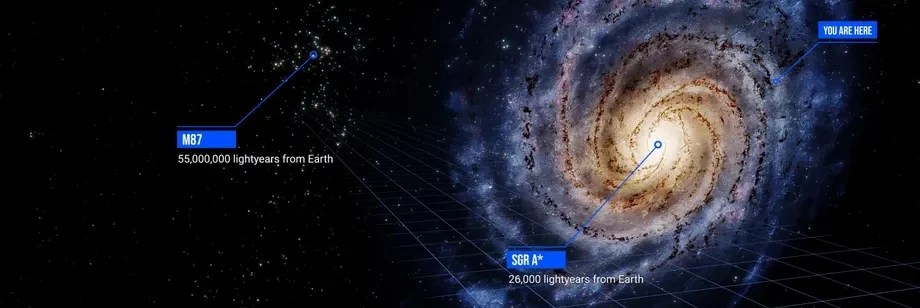Scientists collaborating on the Event Horizon Telescope (EHT) project released an image of the massive black hole at the center of our galaxy, the Milky Way.
It’s just the second photograph ever taken of a supermassive black hole. The EHT project took the first image too, and released it in 2019.
But this one’s much closer to home. This black hole is located 26,000 light-years from Earth, and it’s known as Sagittarius A*, or Sgr A*.
“Until now, we didn’t have the direct picture confirming that Sgr A* was indeed a black hole,” Feryal Özel, an astronomer at the University of Arizona and member of EHT, said during a press conference announcing the news. “This image shows a bright ring surrounding the darkness — the telltale sign of the shadow of the black hole.”
Videos by Rare
“These supermassive black holes, we don’t really know how they formed or grew so large,” Meredith Clark Powell, a black hole researcher at Stanford University, told The Verge. “So it’s a very active area of research.”
Truthfully, one cannot capture an image of a black hole directly. Black holes, by their very nature, can’t be “seen.” The objects are so massive that nothing – not even light – can escape their gravitational pull.
So what scientists do is capture the silhouette of a black hole. If a supermassive black hole is surrounded by a swirling disc of gas and dust, that material will glow bright since the gas and dust is sped up and heated by the powerful gravitational pull of the nearby hole. What EHT is actually capturing is the black hole’s shadow against the backdrop of that glowing gas and dust.
To capture an image of a black hole, however, a single telescope would have to be the size of planet Earth. The EHT is a wide-ranging array of radio dishes spread out across five different continents. The radio telescopes all work together to observe the same object, behaving as if they are one giant planet-sized telescope. It’s then up to the EHT scientists to piece together the data the telescopes gathered to create a single image, according to the EHT group.
“Taking a picture with the EHT is like listening to a song being played on a piano that has a lot of missing keys,” Katie Bouman, an astronomer at Caltech, said during the press conference.
The very first image taken of a black hole came form the EHT project as well, and it was groundbreaking. The fuzzy orange photo showcased a supermassive black hole in a galaxy called Messier 87, or M87, which is located 55 million light-years from Earth. EHT’s work on M87 helped scientists verify the circular shape of black holes and further confirm Albert Einstein’s theory of general relativity, which had predicted their existence.



